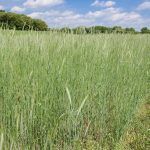Tag Archives Cover crop

Managing cover crop nitrogen, residue breakdown
OMAFRA Field Crop Report for the week of July 31

Boosting soil health with cover-crop combination of soybean and rye
Brigden farm sees benefits to planting winter cover into standing crop of beans

How farmers modified planting equipment to match production goals
Farmers share how they adapted existing iron rather than buy new
Are high equipment prices keeping farmers from achieving production goals? Modifying equipment in the shop, rather than buying the right implement outright, could be a solution. Why it matters: Modifying […] Read more
U.S. aims to double cover crop planting to address climate change
Farmers in 11 states to be eligible for program

Long-term Ontario studies show value of cover crops
Boosting organic matter in soils proved to boost profit margins and reduce yield variation year to year

Cover crop adoption decisions are complex
Knowledge transfer and local expertise key to farmer trust in practices

Looking for a fourth crop to your rotation?
Pollinator-friendly buckwheat shows value in corn-soybean-wheat rotation

Eastern Canada gets poor grades on soil
A report card compares soil management and health between Eastern and Western Canada

Cargill-led fund to pay U.S. farmers for carbon capture

Promoting winter cover crops with local data
Conservation authority looking for cover crop impact on water quality in Upper Thames


